|
Preparations towards the 150 Year Anniversary of Japan-Belgium Relations(No.56)
June 23rd 2014
Each year IMD, a research agency in Switzerland, publishes the World Competitiveness Ranking. The 2014 Yearbook was published about a month back and all the media in each country covered it. So I think there ought to be many who remember. According to the report, Japan has moved up three spots to the 21st place; Belgium on the other hand lost two places and fell to the 28th place. There was no change in the top three ranking countries in the world, the USA, Switzerland and Singapore. Many fluctuations could be seen amongst the European countries, although the northern European countries, Germany and The Netherlands have steadily gone up in the rankings. Belgium ranks 14th in Europe and is, together with France, in the lower middle. It seems that high taxes, such as the corporation tax, factor heavily in contribution to a lower rank. A small factor might also be that labour costs are relatively high, which reduces the international competitiveness of Belgian companies. In the lower end, the South European countries such as Italy, Spain, and Portugal can be found, and are ranked around the 40th to 50th place globally. In Asia, Singapore in 3rd place is followed by Hong Kong (4th), Malaysia (12th), and Taiwan (13th). By the way, China is ranked 23rd and South Korea on 26th, which is not a big difference from Japan. In the end we should not really ponder too much over this publication by IMD, as these competitive rankings differ slightly depending on the research agency.
<150 Year Anniversary in 2016>
The year 2016 will mark the 150 year anniversary of the diplomatic relationships between Japan and Belgium. As I have mentioned several times already in these Chats of the Ambassador, it was August t’Kint de Roodenbeke who conducted the diplomatic negotiations as a representative of the Belgium government with the Tokugawa Shogunate of the samurai period from 1864 for two years. Ever since I came into office as ambassador to Belgium about a year and a half back, I wished for a grand celebration for the 150 year anniversary. This wish came to fruition in the beginning of last month during Prime Minister Abe’s visit, at a top-level meeting with Prime Minister Di Rupo, where it was agreed upon to hold such a celebration. It was unanimously agreed upon about ten days ago when several important people of concerned parties had gathered at the ambassador’s residence to establish a preparatory committee for the celebration affairs - as such the first step was made. With these four organisations at the centre: the Japanese Embassy in Belgium; Nihonjin Kai in Belgium; the BJA; and Friends of Japan, I would like for these organisations to take their part in each event. I would like to plan and hold several events over one year, but it is now the task to research what to plan for the main events. Already, contacts are being made with organisations on the Belgian side, but these will bear a cost, so for the purpose of the celebration I am hoping for the financial support of both the Japanese and Belgian companies and benefactors for the preparatory committee.
<NATO Conference in Bulgaria>
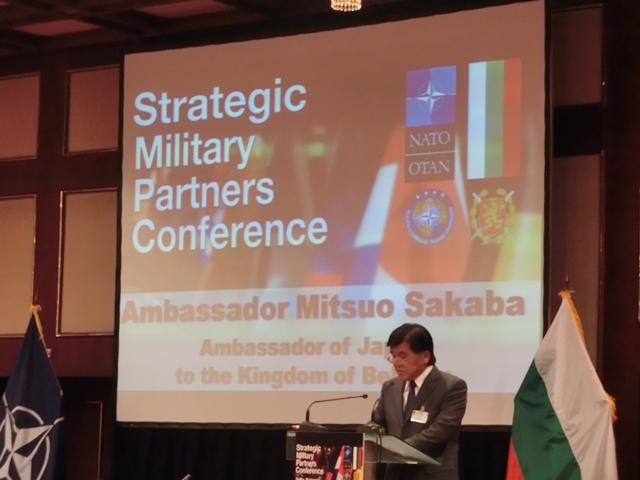 Last week I visited the capital of Bulgaria, Sophia, again after 30 years, with the purpose to attend a meeting of NATO’s Strategic Military Partner Conference (SMPC). Japan is a partner country of NATO, and as such I had the huge honour to give the keynote address during the opening session on the first day. About 200 top-ranked Chiefs of the General Staff from about 50 partner and member countries of NATO participated in the conference. The question surrounding the improvement of the interoperability between the troops of NATO and its partners, when ISAF (International Security Assistance Force) will have withdrawn from Afghanistan at the end of this year, was at the heart of the discussion. A NATO summit is scheduled to be held this coming September in the United Kingdom and discussion will likely focus on the current international situation, especially on the issue in the Ukraine. At the same time the necessity to increase the interoperability between the troops and the strengthening of the relations with the partner countries will be brought to the attention. As the Prime Minister Abe has just visited the NATO headquarters recently, Japan wants to steadily carry out cooperation with NATO from here on out, based on the IPCP (Individual Partnership Cooperation Programme) then signed. Last week I visited the capital of Bulgaria, Sophia, again after 30 years, with the purpose to attend a meeting of NATO’s Strategic Military Partner Conference (SMPC). Japan is a partner country of NATO, and as such I had the huge honour to give the keynote address during the opening session on the first day. About 200 top-ranked Chiefs of the General Staff from about 50 partner and member countries of NATO participated in the conference. The question surrounding the improvement of the interoperability between the troops of NATO and its partners, when ISAF (International Security Assistance Force) will have withdrawn from Afghanistan at the end of this year, was at the heart of the discussion. A NATO summit is scheduled to be held this coming September in the United Kingdom and discussion will likely focus on the current international situation, especially on the issue in the Ukraine. At the same time the necessity to increase the interoperability between the troops and the strengthening of the relations with the partner countries will be brought to the attention. As the Prime Minister Abe has just visited the NATO headquarters recently, Japan wants to steadily carry out cooperation with NATO from here on out, based on the IPCP (Individual Partnership Cooperation Programme) then signed.
<The Modern Continuation of the Order of Malta>
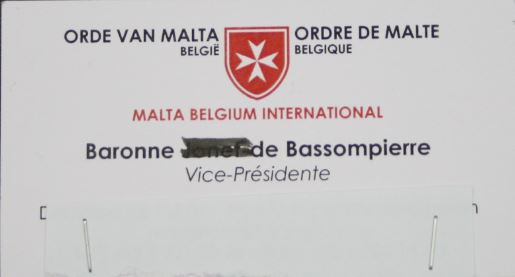 In Chat of the Ambassador 31, I introduced Ambassador Bassompierre, who for eighteen years was the Belgian ambassador to Japan before the Second World War and was the longest ambassador in office in the 150 years of relations between Japan and Belgium. Recently, I had the opportunity to meet the granddaughter of this ambassador, and got to listen to her lengthy memories of her grandfather. When we exchanged business cards, I was surprised to see the title ‘Vice President of the Order of Malta in Belgium’ on one of the cards. The subject of our talk changed all of a sudden from Ambassador Bassompierre to the Order of Malta. For the people who take interest in Europe’s mediaeval history are probably familiar with the Order of Saint John. It was an organisation that came into existence with the main purpose of giving medical aid to Christians who went on pilgrimage to Jerusalem in the beginning of the 12th century after the First Crusade. Because the headquarters of the order had moved to Malta in the Mediterranean in the 16th century after many twists and turns, it became known as the Order of Malta. In Chat of the Ambassador 31, I introduced Ambassador Bassompierre, who for eighteen years was the Belgian ambassador to Japan before the Second World War and was the longest ambassador in office in the 150 years of relations between Japan and Belgium. Recently, I had the opportunity to meet the granddaughter of this ambassador, and got to listen to her lengthy memories of her grandfather. When we exchanged business cards, I was surprised to see the title ‘Vice President of the Order of Malta in Belgium’ on one of the cards. The subject of our talk changed all of a sudden from Ambassador Bassompierre to the Order of Malta. For the people who take interest in Europe’s mediaeval history are probably familiar with the Order of Saint John. It was an organisation that came into existence with the main purpose of giving medical aid to Christians who went on pilgrimage to Jerusalem in the beginning of the 12th century after the First Crusade. Because the headquarters of the order had moved to Malta in the Mediterranean in the 16th century after many twists and turns, it became known as the Order of Malta.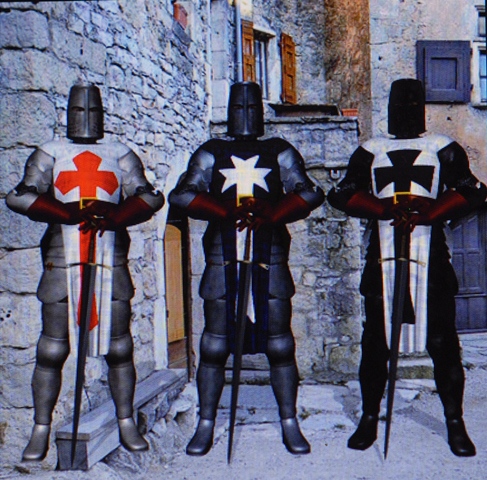 The order was demolished at one point at the end of the 18th century through the conquest of the island by Napoleon Bonaparte. In 1870 the order was restored as an international medical institution, and in 1936 a chapter of the order was set up in Belgium. Currently it has a worldwide membership of 12,000 and 230 in Belgium. Most members are Catholic and are philanthropists, who are deeply concerned with providing medical aid in developing countries, so many of them come from relatively wealthy households. With a rich imagination such as the author of the ‘Da Vinci Code’, Dan Brown, you might think of the Order of Malta as a secret society, plotting international conspiracies, but in reality their activities are quite ordinary and not as dramatic as in novels. The order was demolished at one point at the end of the 18th century through the conquest of the island by Napoleon Bonaparte. In 1870 the order was restored as an international medical institution, and in 1936 a chapter of the order was set up in Belgium. Currently it has a worldwide membership of 12,000 and 230 in Belgium. Most members are Catholic and are philanthropists, who are deeply concerned with providing medical aid in developing countries, so many of them come from relatively wealthy households. With a rich imagination such as the author of the ‘Da Vinci Code’, Dan Brown, you might think of the Order of Malta as a secret society, plotting international conspiracies, but in reality their activities are quite ordinary and not as dramatic as in novels.
<Charity Concert of the Laurent Foundation>
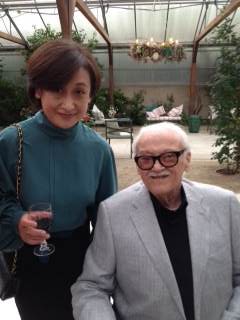 At the end of last week, in the outskirts of Brussels in Solvay Estate in Hulpe, a charity concert was held for the support to the animal welfare organisation, which is presided by Honorary President Prince Laurent. Solvay Estate, also given the name ‘Long Fonds’, was the residence of deceased president of leading chemical company in Belgium, Jacques Solvay. Currently, members of the family occupy the residence. A botanical garden (a greenhouse) called the ‘Winter Garden’ sits on one of the corners of the vast estate. This is where the concert was held. Prince Laurent also made an appearance together with Princess Claire and their three children, and enjoyed the jazz performance for about an hour. The jazz musicians were made up of Steve Houben on the saxophone and Charles Loos on the piano. These two are quite famous in Belgium, are they not? I was surprised by the unannounced guest appearance of world-renowned harmonica player Toots Thielemans, and the many nostalgic tunes he played. Thielemans is 93 years old and recently retired from performing, but until two years ago he had held concerts in every venue around the world. ‘The Grand Old Man of Harmonica’ Toots Thielemans heavily influenced famous Western musicians such as John Lennon. Thielemans can be accredited for bringing the lesser-regarded instrument of the harmonica to a major instrument in the genres of jazz and film music. I believe there must be some Japanese fans as well, as he previously has starred in a commercial on Japanese television. However – and this included me – it is hardly known that he is Belgian. Although Belgium can be said to be a small country, it brings forth many talented artists. I believe this is one of the appealing points of this country. At the end of last week, in the outskirts of Brussels in Solvay Estate in Hulpe, a charity concert was held for the support to the animal welfare organisation, which is presided by Honorary President Prince Laurent. Solvay Estate, also given the name ‘Long Fonds’, was the residence of deceased president of leading chemical company in Belgium, Jacques Solvay. Currently, members of the family occupy the residence. A botanical garden (a greenhouse) called the ‘Winter Garden’ sits on one of the corners of the vast estate. This is where the concert was held. Prince Laurent also made an appearance together with Princess Claire and their three children, and enjoyed the jazz performance for about an hour. The jazz musicians were made up of Steve Houben on the saxophone and Charles Loos on the piano. These two are quite famous in Belgium, are they not? I was surprised by the unannounced guest appearance of world-renowned harmonica player Toots Thielemans, and the many nostalgic tunes he played. Thielemans is 93 years old and recently retired from performing, but until two years ago he had held concerts in every venue around the world. ‘The Grand Old Man of Harmonica’ Toots Thielemans heavily influenced famous Western musicians such as John Lennon. Thielemans can be accredited for bringing the lesser-regarded instrument of the harmonica to a major instrument in the genres of jazz and film music. I believe there must be some Japanese fans as well, as he previously has starred in a commercial on Japanese television. However – and this included me – it is hardly known that he is Belgian. Although Belgium can be said to be a small country, it brings forth many talented artists. I believe this is one of the appealing points of this country.
<A Cartoonist in a Circle of Blanc Moussis>
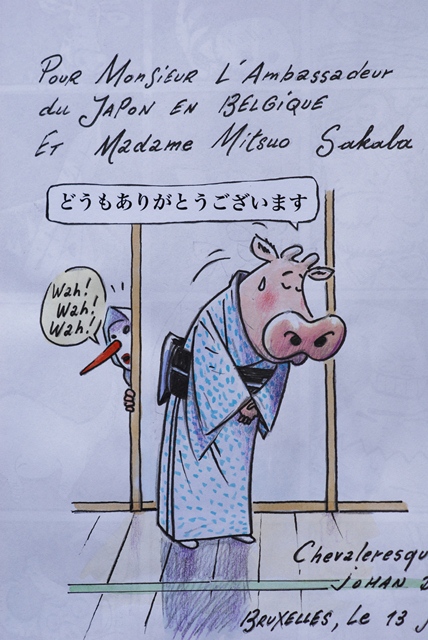 This March I was invited to attend the carnival in the town of Stavelot and I talked about my honorary membership into the ‘secret society’ of Blanc Moussis in Chat of the Ambassador No. 48. In reality there were seven other new members who joined the ceremony on that day. I recently held an informal get-together with them and other principal members of the Blanc Moussis at the ambassador’s residence. Amongst the varied guests, ranging from senior officials of the Ministry of Foreign Affairs of Belgium to businessmen and bankers, one extraordinary figure was present. This person was cartoonist Johan de Moor, whose name is well known in Belgium. His works frequently appear in Belgian newspapers and magazines, and many are published in book form as well. The heroine in one of his books is a ‘sacred cow’. The many events of the story, where the cow contributes greatly to humankind through giving its milk, are published in the on-going comic series “Sacrées Vaches”. On his arrival at the residence he brought me one of these books as a gift, and to my surprise, on the blank page at the cover he drew a unique caricature of the cow protagonist wearing a kimono, and in a speech bubble was a “Thank You” written in Japanese. As it is the sole comic drawing in the world, I will treasure it dearly. This March I was invited to attend the carnival in the town of Stavelot and I talked about my honorary membership into the ‘secret society’ of Blanc Moussis in Chat of the Ambassador No. 48. In reality there were seven other new members who joined the ceremony on that day. I recently held an informal get-together with them and other principal members of the Blanc Moussis at the ambassador’s residence. Amongst the varied guests, ranging from senior officials of the Ministry of Foreign Affairs of Belgium to businessmen and bankers, one extraordinary figure was present. This person was cartoonist Johan de Moor, whose name is well known in Belgium. His works frequently appear in Belgian newspapers and magazines, and many are published in book form as well. The heroine in one of his books is a ‘sacred cow’. The many events of the story, where the cow contributes greatly to humankind through giving its milk, are published in the on-going comic series “Sacrées Vaches”. On his arrival at the residence he brought me one of these books as a gift, and to my surprise, on the blank page at the cover he drew a unique caricature of the cow protagonist wearing a kimono, and in a speech bubble was a “Thank You” written in Japanese. As it is the sole comic drawing in the world, I will treasure it dearly.
|

